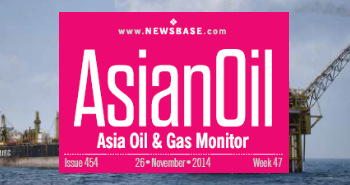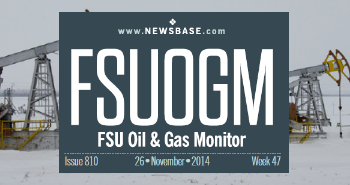Could Mongolia host a China-Russia oil pipeline?

Russia proudly unveiled plans in 2019 to build a second natural gas pipeline to China, this time traversing Mongolia. As the EU drives to sever all energy ties with Russia, Moscow now appears to be pushing for an oil pipeline that would also cut through Mongolia.
Russian President Vladimir Putin met with his Chinese and Mongolian counterparts, Xi Jinping and Ukhnaagiin Khurelsukh, at a summit of the Shanghai Cooperation Organisation (SCO) in the Uzbek city of Samarkand on September 15. The three sides are already collaborating on the Power of Siberia 2 project, aimed at pumping some 50bn cubic metres per year of gas from Russian fields that currently serve European customers to China via Mongolia. A supply contract to underpin the pipeline is not yet in place, but Russian Deputy Prime Minister Alexander Novak said last week he expected one to be signed shortly.
Now, with the EU preparing to impose an embargo on Russian oil imports within a few months, it appears that discussions are also underway on an oil pipeline through Mongolia.
Mongolia’s Khurelsukh said at the summit that his government supported the construction of not only gas but also oil pipelines through the country’s territory. No plans for an oil pipeline via Mongolia have yet been formally proposed, but the comment indicates that it is something the three parties are considering.
Benefits
Russia is scrambling to find new destinations for its energy exports as EU imports continue to fall. The country already pumps 1.6mn barrels per day (bpd) to China and other Asian markets via the Eastern Siberia-Pacific Ocean (ESPO) pipeline system. Its other option is sending crude through Kazakhstan, but along both routes oil flow is now close to nearing maximum capacity, creating a bottleneck at a time when Russia is eager to divert as much oil to Asia and away from Europe as possible.
Running an oil pipeline through Mongolia would solve this problem. Its most logical starting point would be the Tayshet hub in the west of the Irkutsk region, where ESPO connects with the rest of the Russian oil transport system. First of all, this would provide a fairly direct route across Mongolia to the Chinese east coast, running past the Mongolian capital of Ulaanbaatar. Secondly, there is the issue of Russia’s differing blends of oil. ESPO carries sweet crude from Eastern Siberian fields that typically sells at a premium to the sour Urals crude produced in Western Siberia. The pipeline through Mongolia could carry Western Siberian sour oil to China that is currently sold to Europe, whereas ESPO could continue pumping sweet crude. Keeping the flows separate would enable Russia to continue fetching a premium for ESPO blend oil, and separately offer sour grade to those Chinese refineries designed for it.
For China, an additional oil pipeline from Russia would help ease its reliance on supplies shipped through the Straits of Malacca, seen as a geopolitical vulnerability. China could also barter for interests in the upstream Russian fields that supply that oil, strengthening its position in the country’s energy sector.
Mongolia, meanwhile, would gain lucrative transit revenues, but also, more importantly, access to oil supplies itself. This would allow the country to accelerate plans for its first oil refinery, tentatively scheduled for launch in 2025. The country currently relies completely on imported petroleum products. Hosting an oil pipeline, in addition to a gas pipeline, would also increase Mongolia’s role as a facilitator of energy trade between China and Russia, giving it some leverage over its two more powerful neighbours.
Obstacles
On the Russian side, an oil pipeline project would face similar obstacles to those that Power of Siberia 2 is facing. Cut off from Western financial systems, Russia could struggle to secure funding. China could in theory step in with support, but Beijing is likely to be less enthusiastic about such a project than Moscow, which is desperate to find new markets to replace those it is losing in Europe.
Exploiting Russia’s desperation, China could drive a hard bargain on prices, and demand increased access to Russia’s upstream industry in return for backing the project. Moscow has tried to put a positive spin on the exit of Western majors from its oil sector in response to the war in Ukraine, claiming it is regaining control over its resource wealth. But Russia might have to cede that control once again, to China.
Russia is already competing with Saudi Arabia for the crown of China’s top oil supplier. And it is unclear whether China would be comfortable with expanding its already sizable energy relationship with Russia even further, especially if Power of Siberia 2 goes ahead as expected. Beijing has striven to have a diversified energy import mix, for security reasons. And Russia will not go ahead with an oil pipeline project without having a supply contract in place to cover most of its flow capacity.
It is also important to note that while Russia and China have come together in opposition to Western hegemony, their relationship continues to be characterised by some mistrust and suspicion. Namely, Russia is concerned about expanding Chinese influence in the Far East, and in Central Asia. In its energy war against Europe, Moscow has demonstrated its willingness to use energy supplies as a weapon, and this has likely alerted Beijing of the dangers of entrusting its energy security to the Kremlin.



Follow us online